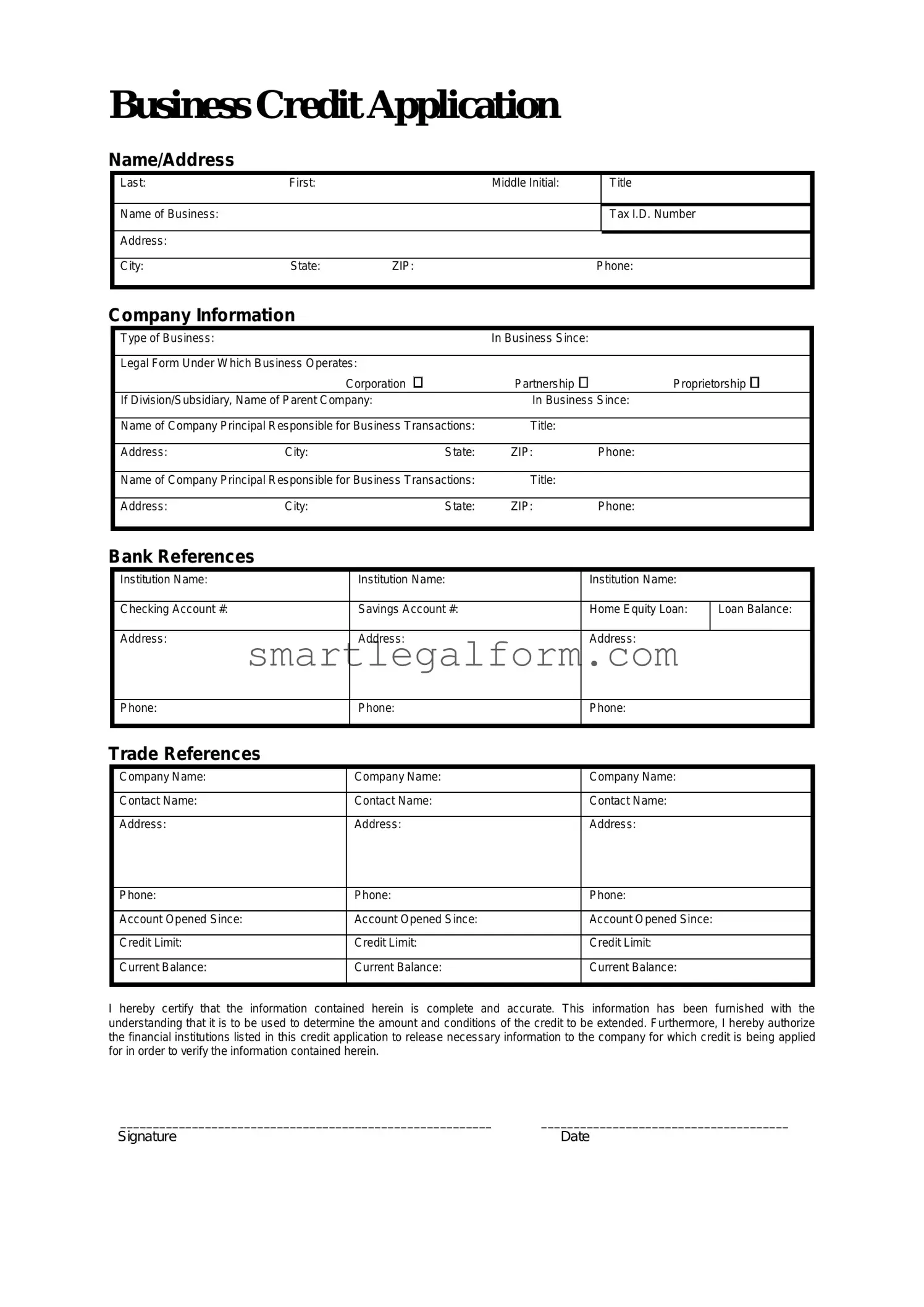Completing a Business Credit Application form can be a crucial step for many entrepreneurs seeking financial support. However, several common mistakes can hinder the approval process. Understanding these pitfalls can help applicants present themselves in the best light.
One frequent mistake is incomplete information. When applicants skip sections or provide vague answers, it raises red flags for lenders. Every detail matters, from the business's legal name to its financial history. Ensure that all fields are filled out accurately and completely to avoid delays or denials.
Another common error is failing to check credit history before submitting the application. Lenders will review an applicant's credit report, and any inaccuracies can impact their decision. By checking their credit history in advance, applicants can address any discrepancies and improve their chances of approval.
Many applicants also underestimate the importance of providing accurate financial statements. These documents should reflect the business's current financial health. Inaccurate or outdated statements can lead to a lack of trust from lenders. It's essential to present a clear and truthful picture of the business's finances.
Additionally, some individuals neglect to include supporting documentation. Lenders often require additional paperwork, such as tax returns or bank statements, to verify the information provided. Failing to include these documents can result in a longer review process or outright rejection.
Another mistake is not understanding the terms of credit being applied for. Applicants should be familiar with the interest rates, repayment terms, and any fees associated with the credit. This knowledge not only helps in making informed decisions but also demonstrates to lenders that the applicant is serious and responsible.
Moreover, applicants sometimes rush the application process. Taking the time to review and revise the application can make a significant difference. Errors made in haste can be detrimental. A well-thought-out application reflects professionalism and attention to detail.
Lastly, many people fail to follow up after submitting their application. A polite inquiry about the status of the application can show interest and initiative. It also provides an opportunity to address any concerns that the lender may have. Following up can help keep the application on the lender's radar.
By being aware of these common mistakes, applicants can improve their chances of securing the credit they need. Attention to detail, thoroughness, and understanding the requirements are key components of a successful Business Credit Application.

